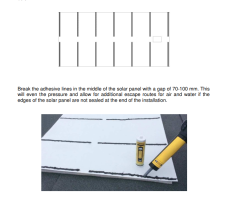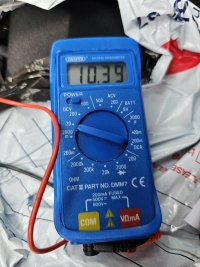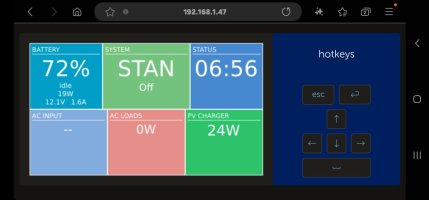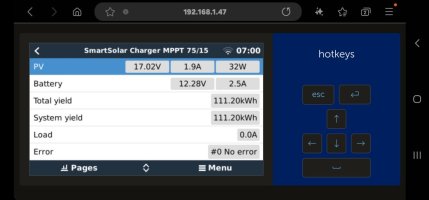yes, well it seems to be well documented that unsupported ridges is what causes the premature failures in the panels,
as it allows uneven thermal expansion which crack the busbars.
I've got flexible panels now 5years old that work perfect . . . as they are mobile and not stuck to a roof.
maybe take a look at this install guide - print out and offer to your fitters?
+++++++++++
++++++++++++++
12V solar panel solar charging kits for motorhome caravan boat campervan yacht marine off-grid
www.photonicuniverse.com
+++
The mounting surface for the solar panel should be smooth and even. If the surface isuneven, it is recommended to prepare it prior to the installation by filling in the gaps. Forexample, spaces between ridges on a vehicle roof can be filled in as the photos belowshow – this will make mounting easier and quality of bond better. When the gaps are filledin, a greater support surface area for the solar panel will reduce mechanical stress andimprove solar panel longevity.
Gluing with adhesiveYour chosen adhesive should be suitable for both the solar panel and the mountingsurface. It should also be designed for outdoor applications (with a wide temperaturerange, UV light protection etc). Pay attention to the application temperature and dryingtime requirements.The mounting surface must be even, clean (use a degreasing agent) and dry. Theinstallation must be carried out with care and precision, as this permanent method doesnot allow for repositioning.Warning! Although preparing the roof surface for better adhesion is permitted (e.g. byremoving the old paint, grinding, using a primer etc), you must not use any sand paperor other sharp or abrasive tools on the underside of the solar panel.There are two main options for application of the adhesive:1) Apply the adhesive to the underside of the solar panel in parallel beads brokenin the middle of the solar panel. Depending on the application the edges of thesolar panel can be sealed all the way round with the same adhesive at the end
of the installation.2) Cover the entire underside of the solar panel with a layer of adhesive, spreadingit evenly with a trowel or a similar tool.The first option is recommended for smooth and even surfaces. If the surfaces areuneven (for example, roof ridges on a campervan) a larger contact area isrecommended for adhesive and the second application option will be the best.For the default first application option, apply thick 10-12mm adhesive beads on the rearof the solar panel, in parallel to each other, as shown in the diagram and the photobelow:
Break the adhesive lines in the middle of the solar panel with a gap of 70-100 mm. Thiswill even the pressure and allow for additional escape routes for air and water if theedges of the solar panel are not sealed at the end of the installation.
The adhesive lines can be as close to each other as required (the number of linesdepends on the strength your chosen adhesive), but a minimum gap of at least 70 mmbetween lines is recommended. In general, for most plastic / fibreglass / metal surfacesHandling and Fitting Manual for semi-flexible solar panels ARFLX, FLPROC and FLAX seriesPage 9 of 12and a good quality adhesive, a gap of 100 - 150 mm between parallel adhesive beadswould form a strong bond.
++++












